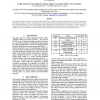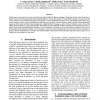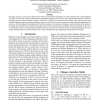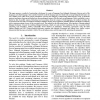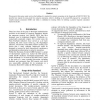41
Voted
LREC
2008
14 years 26 days ago
2008
To achieve true interoperability for valuable linguistic resources different levels of variation need to be addressed. ISO Technical Committee 37, Terminology and other language a...
LREC
2008
14 years 26 days ago
2008
In this paper we address the issue of developing an interoperable infrastructure for language resources and technologies. In our approach, called UFRA, we extend the Federate Data...
LREC
2008
14 years 26 days ago
2008
This paper describes the corpus of university lectures that has been recorded in European Portuguese, and some of the recognition experiments we have done with it. The highly spec...
LREC
2008
14 years 26 days ago
2008
In this paper we present how resources and tools developed within the Human Language Technology Group at the University of Belgrade can be used for tuning queries before submittin...
LREC
2008
14 years 26 days ago
2008
In dialogue systems, it is necessary to decode the user input into semantically meaningful units. These semantical units, usually Dialogue Acts (DA), are used by the system to pro...
LREC
2008
14 years 26 days ago
2008
ProPOSEL is a prototype prosody and PoS (part-of-speech) English lexicon for Language Engineering, derived from the following language resources: the computer-usable dictionary CU...
LREC
2008
14 years 26 days ago
2008
Basque is a highly inflected and agglutinative language (Alegria et al., 1996). Two-level morphology has been applied successfully to this kind of languages and there are two-leve...
LREC
2008
14 years 26 days ago
2008
The multilingual European Thesaurus on International Relations and Area Studies (European Thesaurus) is a special subject thesaurus for the field of international affairs. It is i...
LREC
2008
14 years 26 days ago
2008
This paper proposes a method of constructing a dictionary for a pair of languages from bilingual dictionaries between each of the languages and a third language. Such a method wou...
LREC
2008
14 years 26 days ago
2008
We present in this poster actual work on the building of a standard for syntactic annotation in the framework of ISO TC37/SC4. We describe here mainly the meta-model for syntactic...

